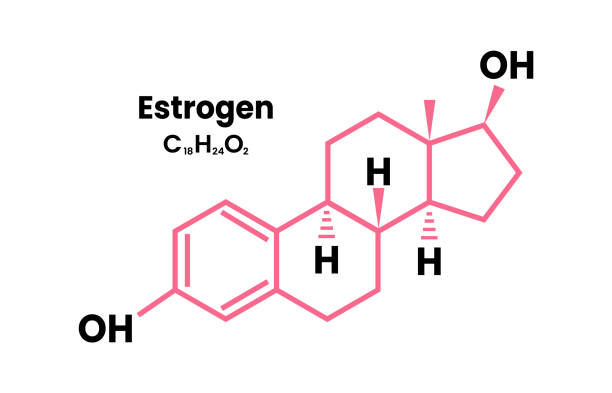Estrogen in Perimenopause: What’s Really Happening Inside Your Body
- Kim Lorello
- Sep 18
- 3 min read

Estrogen is one of the most important hormones for women’s health. It influences everything from your menstrual cycle and bone strength to mood, energy, and even how your body stores fat. During perimenopause, estrogen production becomes less predictable—causing many of the symptoms that women notice in their 40s and 50s.
Let’s break down how estrogen changes across the different life stages, what symptoms show up when it’s too high or too low, and how you can support your health both with and without hormone therapy.
Estrogen in a Normal Cycle
In a regular menstrual cycle:
Follicular Phase (first half): Estrogen rises, helping follicles (eggs) develop and preparing the uterine lining.
Ovulation: Estrogen peaks, triggering the release of an egg.
Luteal Phase (second half): Progesterone becomes dominant, but estrogen remains present to balance mood and energy.
This steady ebb and flow is why cycles feel predictable before perimenopause.
Estrogen in Perimenopause
During perimenopause (the transition years before menopause):
Estrogen levels swing up and down unpredictably.
Some cycles may have very high estrogen (leading to PMS-like symptoms).
Other cycles may drop suddenly, leaving you with low-estrogen symptoms.
Ovulation becomes inconsistent, so progesterone often doesn’t rise enough to balance estrogen.
This rollercoaster is what makes perimenopause so different from both normal cycles and post menopause.
Estrogen After Menopause
After menopause (12 months without a period):
The ovaries stop releasing eggs.
Estrogen levels stay low and steady.
Symptoms from fluctuating hormones often settle down, but long-term effects (like bone loss, vaginal dryness, and changes in metabolism) can become more noticeable.
Signs of High Estrogen
Heavy or prolonged periods
Breast tenderness or swelling
Bloating and water retention
Mood swings or irritability
Headaches or migraines
Acne or oily skin flare-ups
Constipation or digestive sluggishness
Signs of Low Estrogen
Hot flashes and night sweats
Vaginal dryness or discomfort during sex
Trouble sleeping
Brain fog and memory lapses
Joint aches or stiffness
Lower mood or anxiety
Dry, thinning skin and hair changes
Acne breakouts (caused by unbalanced androgens when estrogen is low)
Increased bloating or reflux
More frequent urinary urgency or leaks
Supporting Estrogen in Perimenopause (With and Without Hormone Therapy)
There isn’t one “right” way to manage shifting estrogen levels. Some women choose hormone therapy, while others prefer to lean on natural lifestyle approaches—or combine the two.
With Hormone Therapy
If you’re a good candidate and your provider recommends it, hormone replacement therapy (HRT) can be a highly effective option. It helps stabilize estrogen levels, reduce hot flashes and night sweats, protect bone health, and improve sleep and mood. For many women, HRT can be life-changing when symptoms are intense or disruptive.
Without Hormone Therapy
Even if you don’t use HRT, there are powerful ways to support your body:
Nutrition for Hormone Health
Focus on protein for muscle and blood sugar balance.
Include fiber-rich foods (beans, veggies, flax, chia) to help your body clear excess estrogen.
Eat foods rich in phytoestrogens (soy, lentils, flaxseeds) for gentle estrogen support.
Strength Training - Lifting weights helps maintain bone density, build lean muscle, and stabilize blood sugar—areas that estrogen normally supports.
Stress Management - High stress raises cortisol, which worsens estrogen imbalances. Try meditation, breathwork, journaling, or simply carving out daily quiet time.
Quality Sleep - Set a bedtime routine, keep your room cool, and limit screen time before bed to reduce sleep-disrupting night sweats.
Support Gut & Liver Health - These organs process estrogen. Limit alcohol, stay hydrated, and include cruciferous veggies (broccoli, Brussels sprouts, cauliflower).
Final Thoughts
Perimenopause is a season of shifting estrogen patterns, but you are not powerless. By understanding what’s happening in your body—and knowing that support exists both with and without hormone therapy—you can make empowered choices.
✨ Remember: change starts from within. Supporting your body in these ways helps you feel strong, balanced, and ready for this next chapter.




Comments